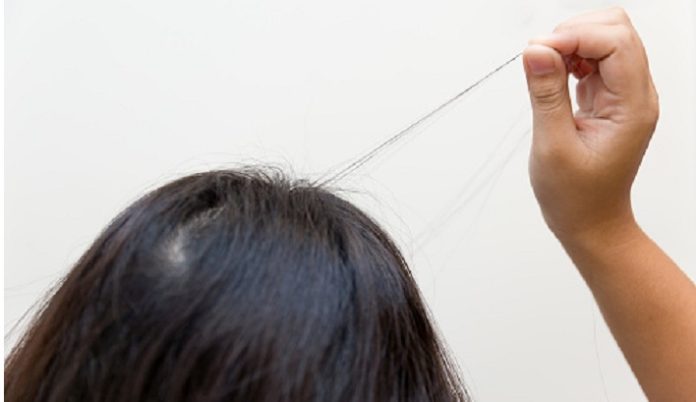Nowadays, many people suffer from anxiety, depression, and many other problems related to mental health. We all deal with it in our own way. For people suffering from trichotillomania, it often includes an urge to pull out their own hair. This is a common psychological disorder, but often underdiagnosed. Over a longer period of time, pathological pulling your hair out can increase emotional distress and lead to bald spots. It’s very difficult because the need to pull your hair out is overwhelming and you may feel it’s uncontrollable.
Many people with these symptoms may think this is just a bad habit, and it’s nothing to be worried about. Others, which are experiencing more severe physical and psychological problems, often ask for help from an expert.
If you are noticing some symptoms, or are diagnosed with trichotillomania, even if you are just curious about this condition – please continue reading. Here you will learn everything about signs and symptoms, as well as different treatments available.
Etymology and Definition
The term comes from Ancient Greek. Thrix means “hair”; tillo means “pull out/pluck” and mania means “madness”.
Also known as TTM, trichotillomania is a mental disorder, which makes people pull out their hair almost uncontrollably. Studies have shown that 0.5-2% of the population are affected by this disease. Many people with TTM focus on the hair from their scalp, but areas like eyebrows, or eyelashes are common as well. It is usually developed during adolescence or childhood (affecting both males and females in childhood, but more females during adulthood). Many studies show how TTM is related to hormones, so women may experience more urges during the menstrual cycle or pregnancy. Experts at nomorehairpulling.com are emphasizing how much struggle and stress women are experiencing, due to society’s expectations, and all the beauty standards. However, don’t worry. TTM is treatable and you are not alone. There are many professionals that can help you, the same way they already helped so many people.
Symptoms
A person suffering from trichotillomania may experience these physical and behavioral symptoms:
- Pulling out hair repeatedly
- Eating hair
- Breaking off pieces of hair
- Feeling relieved after
- Inability to stop despite the attempts
- Anxiety and stress
- Hair loss and bald patches
- Skin irritation
- Social anxiety
Causes and Risk Factors
Researchers are not really sure what causes a person to develop TTM. Some suggest stress, or dealing with adverse emotions are responsible. Factors that can increase the risk of developing this problem are:
- Genetic history: People with a close relative (parents or siblings) with trichotillomania are more likely to suffer from the same condition.
- Trauma: This applies mostly to childhood traumas, but there is not enough research to know for sure.
- Brain chemistry: Doctors are still trying to determine how much changes in the brain may affect TTM, and how much TTM is related to other similar behaviors.
Trichotillomania can sometimes be connected to other mental health conditions, such as:
- Anxiety
- Depression
- OCD (obsessive-compulsive disorder)
- ADHD (attention deficit hyperactivity disorder)
- Autism
Treatments
Treatment of TTM depends on how severe the symptoms are. A mental health professional shall often recommend the following:
Behavioral Therapy
Some studies have shown that the best type of behavioral therapy for treating trichotillomania is Habit Reversal Therapy (HRT). It consists of five stages:
- Awareness training (identifying triggering factors)
- Competing response training (replacing hair pulling with a different behavior)
- Motivation and compliance (praises for the progress made during the therapy)
- Relaxation training (meditations, breathing techniques, etc.)
- Generalization training (making sure the new behavior becomes automatic)
HRT offers an in-depth understanding of your unique pulling behaviors and concentrates on your specific needs. Awareness training and self-monitoring are essential, as well as stimulus control and response procedures. The goal is for you to learn to recognize your urges and avoid situations in which pulling is more likely, at first. In time, you will be able to adopt behaviors that can be used instead of pulling. The work involves improving mindfulness and many techniques that help anxiety and stress.
Medication
Here is a list of medication proven to be useful in treating trichotillomania:
- N-acetylcysteine
- Olanzapine (antipsychotic)
- Clomipramine (antidepressant)
- Naltrexone (opioid antagonist)
- SSRI (selective serotonin reuptake inhibitors-antidepressant)
In case you need therapy with meds, it’s absolutely necessary to consult with your doctor, who will prescribe the right therapy and dosage.
Now that you know all the symptoms, causes, and how to treat them, it’s important to remember that you have nothing to be ashamed about! It is possible to live a happy life, to overcome this condition, and find the right support. You may learn so much about yourself during therapy and you may be able to help others after acknowledging some of the deeper issues that caused TTM. True beauty is so much than your hair and no one can ever take that away from you.

























